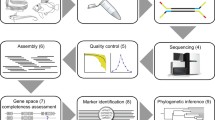Abstract:
With the draft sequence of the human genome available and an increasing number of organisms being sequenced, attention is becoming focused on sequence interpretation and functional analysis. Comparative genomics will play an important role in evaluating these data. At the molecular level, roles for uncharacterized proteins can be hypothesized by identifying conserved protein domains and putative noncoding regulatory elements can be defined from direct sequence comparisons of evolutionarily distant organisms. At a higher level, questions, such as the importance of gene order positioning, conservation of linkage, and genome evolution, can begin to be answered by collecting map data from different organisms. This minireview, centering on Fugu regions sharing synteny with human chromosomes 11p, 20q, and 6p21.3, details some of the ways in which the Japanese pufferfish can contribute to the study of comparative genomics and evaluation of sequence data from the genome programs.
Similar content being viewed by others
Author information
Authors and Affiliations
Additional information
Received January 31, 2001; accepted March 30, 2001.
Rights and permissions
About this article
Cite this article
Clark, M., Smith, S. & Elgar, G. Use of the Japanese Pufferfish (Fugu rubripes) in Comparative Genomics. Mar. Biotechnol. 3 (Suppl 1), S130–S140 (2001). https://doi.org/10.1007/s10126-001-0034-1
Issue Date:
DOI: https://doi.org/10.1007/s10126-001-0034-1




